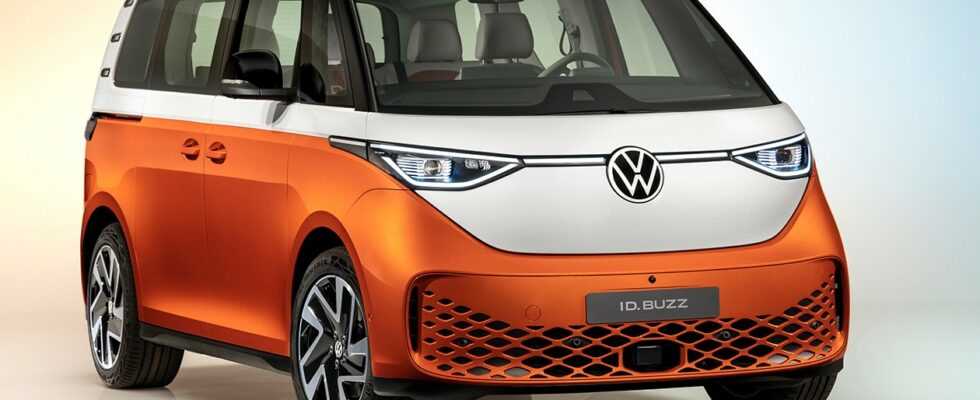They could have also called it VW ID.Bulli, but then they would have omitted the bus pun. In any case, the VW ID.Buzz has now been officially presented. The electric great-great-grandson of the legendary original VW bus, the T1. The design borrowings from the original make the new Raumstromer so likeable. It complements the Bulli line-up, which currently consists of the T6.1 and the new Multivan (based on MQB).
The ID.Buzz is the second electrically powered Bulli since the T2, which was shown at the Hanover Fair 50 years ago. Not as a series vehicle and with the manageable range of 85 kilometers. Back then, 32 kW/43 hp and 160 Nm provided something similar to propulsion. The modern edition is a different caliber, based on the MEB modular electrical kit and blessed with a 150 kW/204 hp or 310 Nm electric motor, which, like the ancestor sits on the rear axle. The top speed is almost twice as high at a limited 145 km/h. Only one battery size availablePower is stored in the MEB’s largest available battery, which stores 77 kWh net. The maximum charging power is 170 kW, which should enable charging from 5 to 80 percent in 30 minutes. The AC charger is 11 kW. VW has not yet specified the range, but it will benefit from the cW value of 0.285 to 0.29, which is relatively cheap for a panel van. However, the Buzz will not come close to the 526 kilometers of the VW ID.3 due to the larger frontal area (1.94 meters high including roof antenna). At 4.71 meters, the ID.Buzz is almost 20 centimeters shorter than the T6.1, with 1.99 meters but 8 centimeters wider. The wheelbase is about the same at 2.99 m. Later there will be a version with an extended wheelbase, which will also be available in Europe and exclusively in the USA. All variants roll off the assembly line in Hanover.ID.Buzz comes as a bus and transporterBasically, there will be two versions of the VW ID.Buzz: a five-seater (bus) and a transporter (cargo, not for the USA). The “Cargo” comes with a large tailgate and optionally one or two sliding doors and a partition between the loading area and driver’s cabin. There is either a single seat or a two-seater bench seat on the passenger side. The simpler version of the interior goes particularly well with this, which gives it a special charm when you have the blessed T1 in mind. The 3.9 m³ cargo space of the Cargo offers space for two Euro pallets, 650 kg payload and a maximum total weight of 3000 kg are approved, which suggests an unladen weight of 2350 kg. The load is secured with optional lashing eyes in the floor or lashing rails in the side walls. Maybe borrowed from the former hippie bus? The interior is definitely fresh and cheerful. The front seats are basically height-adjustable, the top version comes with electric adjustment, memory and massage functions. The sliding, 40:60 split and foldable rear bench seat can be reached via a sliding door on each side. Behind it is a 1121 liter luggage compartment (loaded to the top of the seat). With the bench folded down, a volume of 2205 liters is available.New things are always on boardLED headlights are standard in the stylish front, optionally with matrix technology. A narrow LED bar connects the headlights, interrupted by an oversized VW logo as a homage to the good old days. There is also a continuous LED strip at the rear. Like the T1, the ID.Buzz is optionally available in various two-tone paint finishes, which can also be found in the interior in modern times. In principle, the operating system is known from VW’s other current Stromers, with a 5.3-inch display (the VW as “large”) as a speedometer & Co as well as a central touchscreen with touch sliders for volume and temperature control. Depending on the equipment, this measures ten or twelve inches. The gear selector is designed as a steering column lever. All the assistance systems available in the MEB are available for the ID.Buzz. The highlight is the “Travel Assist with swarm data”, which ideally (i.e. when swarm data is available) does not even need road markings on country roads to stay in lane. On the Autobahn, it can change lanes automatically from 90 km/h. The market launch is planned for mid-September 2022. Prices have not yet been announced.
source site-13
